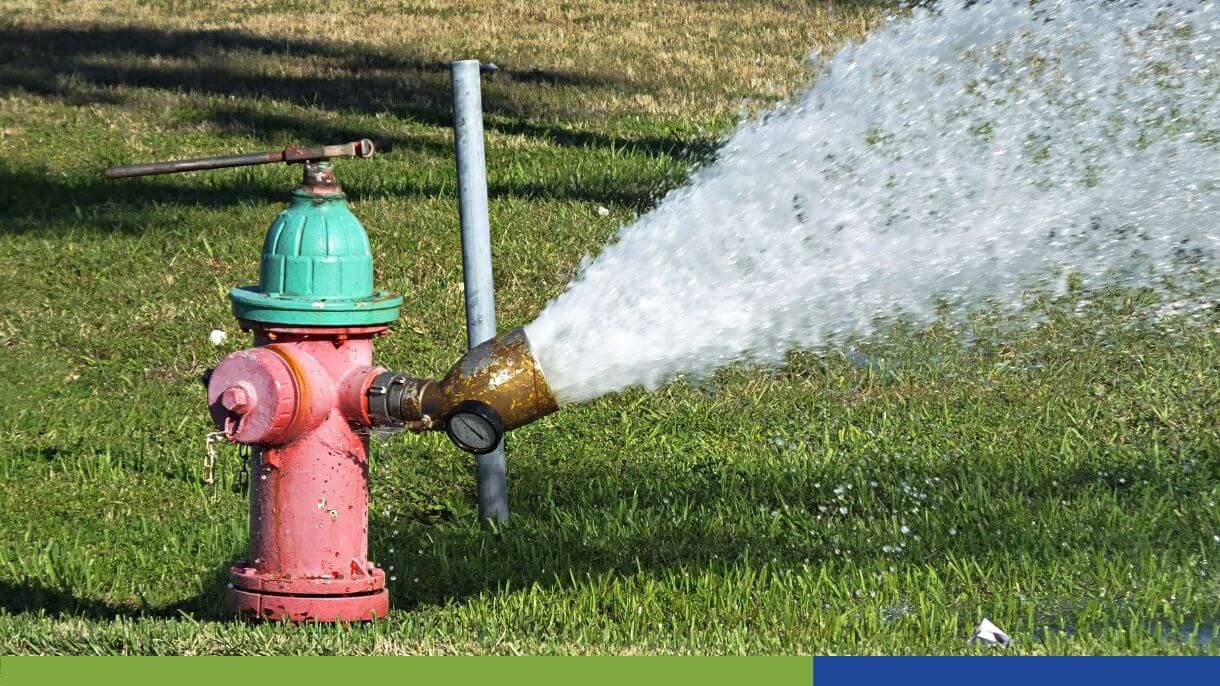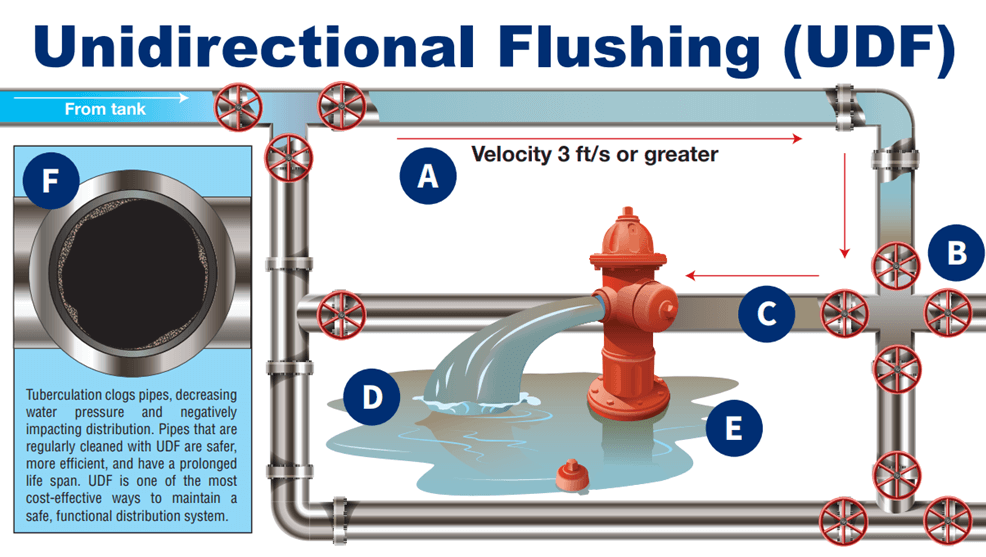
The Importance of Flushing Water Systems

What is Water Main Flushing?
Water main flushing is the process of running water through the pipes in our water system as a maintenance measure to prevent the potential build-up of sediment, rust, and naturally occurring microorganisms. This helps ensure that you receive clean and reliable water. Running this water through the pipes at a high velocity and discharging the water through designated fire hydrants scours the inside of the pipes, cleaning them out and preventing sediment and mineral deposit flakes.
Why is Water Main Flushing Important?
- It helps prevent the potential build-up of sediment, mineral deposits (such as iron or manganese), and naturally occurring microorganisms that could possibly accumulate over time and cause discolored water.
- Helps us identify and repair any potentially malfunctioning pipe valves and fire hydrants to ensure they will work properly during an emergency.
- Increases the carrying capacity of the pipes by preventing sediment and mineral buildup.
How Does Flushing Work?
Water utilities will often employ unidirectional flushing (UDF), which is where water mains are flushed systematically from areas closest to the source water to the outer edges of the water system. It is a comprehensive process whereby the water is forced through the water mains at a high speed, discharging through fire hydrants. This high speed is what is needed to scour and clean the mains. During UDF, valves are opened and closed, and this type of exercise helps to prolong the useful life of both hydrants and valves. UDF actually uses up to 40% less water than conventional flushing!

What Should I Expect During Flushing?
- Your water pressure may decrease or fluctuate.
- You may notice discolored water from rust and sediment that may be stirred up during the flushing process. This is temporary and may take up to several hours to clear.
- During this flushing process, you may see operators temporarily marking off traffic and parking areas for safety.
- During the flushing process, you may wish to delay running appliances that use water, such as dishwaters and washing machines.
Should I Do Anything Once the Flushing is Completed?
When you have been advised that the flushing activity is over, you are encouraged to do the following:
- Run a cold water tap closest to your meter (typically an outside tap used for a garden hose, but this may differ; for those with basements, that tap may be the closest, and for others, it may be a first floor sink), up to 15 minutes.
- Keep the tap open until the water runs clear. If you have trouble determining the clarity, it may help to fill a white or light-colored cup for viewing.
- If the water doesn’t appear clear after 15 minutes, wait 15-30 minutes and run again.
- Do NOT run a tap that has a water filter connected to it or the potential minerals/sediment may clog your filter.
- Avoid running HOT WATER initially, as that could draw the sediment/minerals into your hot water tank.
- For sediment that may have entered your hot water tank, use the clean out tap at the bottom of the tank to remove any settled material. Follow the instructions that came with the tank, to drain the tank (and be careful of the hot water).
- Your first load of laundry after a flush should be dark colors only